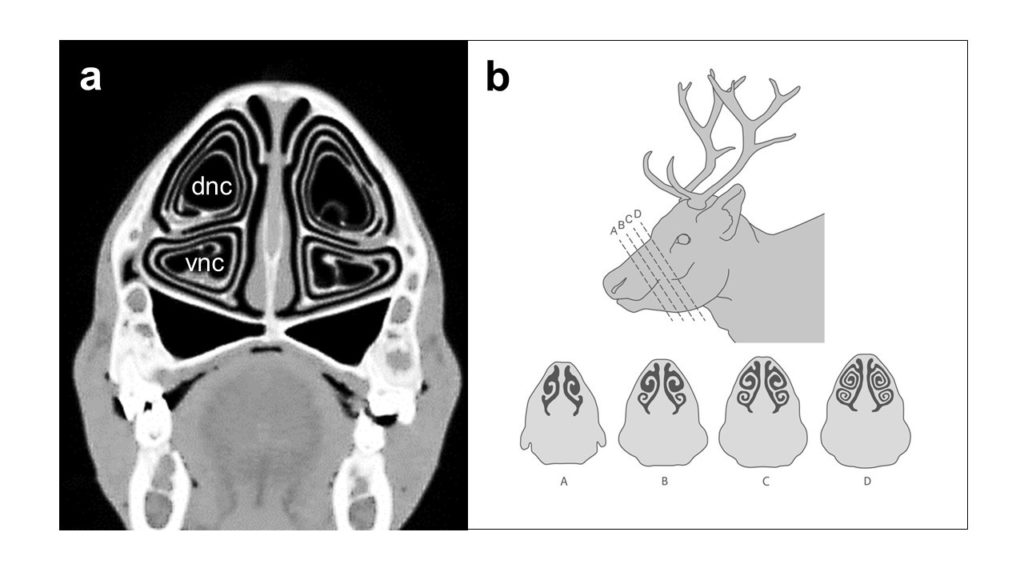
Reindeer (Rangifer tarandus) have evolved elaborate nasal turbinate structures that are perfused via a complex vascular network. These are subject to thermoregulatory control, shifting between heat conservation and dissipation, according to the animal’s needs. The three-dimensional design of the turbinate structures is essential in the sense that they determine the efficiency with which heat and water are transferred between the structure and the respired air. The turbinates have already a relatively large surface area at birth, but the structures have yet not reached the complexity of the mature animal. The aim of this study was to elucidate the structure-function relationship of the heat exchange process.
About the publication:
- Title: Energy-Efficiency of Respiration in Mature and Newborn Reindeer
- Published in: Journal of Comparative Physiology B
- Authors: Simon Birger Byremo Solberg, Signe Kjelstrup, Elisa Magnanelli, Natalya Kizilova, Iratxe Lorea Casado Barroso, Mario Acquarone, Lars P. Folkow
- Corresponding author: Signe Kjelstrup (Signe.Kjelstrup@ntnu.no )
